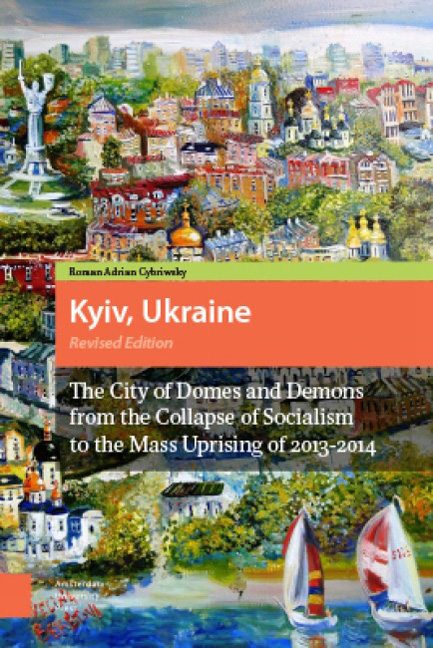 Kyiv, Ukraine
Kyiv, Ukraine Book contents
- Frontmatter
- Dedication
- Contents
- List of Illustrations and Tables
- A Note about Transliteration
- Preface and Acknowledgements
- 1 Far from Heaven
- 2 The Missing Museum of the History of the City of Kyiv
- 3 Sketches from the Capital
- 4 Soviet Ways, Post-Soviet Days
- 5 Historical Memory
- 6 The Center of Kyiv
- 7 A Geography of Privilege and Pretension
- 8 Landscapes of Struggle
- 9 “Suburbia”
- 10 Seamy Stories
- 11 The Defenders of Kyiv
- 12 Reflections
- Postscript
- References
- References
3 - Sketches from the Capital
Published online by Cambridge University Press: 10 December 2020
- Frontmatter
- Dedication
- Contents
- List of Illustrations and Tables
- A Note about Transliteration
- Preface and Acknowledgements
- 1 Far from Heaven
- 2 The Missing Museum of the History of the City of Kyiv
- 3 Sketches from the Capital
- 4 Soviet Ways, Post-Soviet Days
- 5 Historical Memory
- 6 The Center of Kyiv
- 7 A Geography of Privilege and Pretension
- 8 Landscapes of Struggle
- 9 “Suburbia”
- 10 Seamy Stories
- 11 The Defenders of Kyiv
- 12 Reflections
- Postscript
- References
- References
Summary
Castle Hill
It is good to get high, so we climb Zamkova Hora (Castle Hill), a high promontory in the center of Kyiv, to reflect on a city rich with history and promise, and on the predicaments of today. The hill is also known as “Lysa Hora,” (“Bald Mountain”). From there we gain a panorama of the city and various places that we will discuss in the pages ahead, as well as have a close-up look at the hill itself and its peculiarities. An entire book can be written about this place. Indeed, the hill has inspired many: Nikolai Gogol (1819-1898) used Castle Hill as the setting for his haunting short story “The Eve of Ivana Kupala” (1830); which in turn was the inspiration for the classic symphonic poem called “Night on Bald Mountain” (1867) by Modest Mussorgsky (1839- 1881); which in turn was presented in a new arrangement in 1886 by Nikolay Rimsky-Korsakov (1844-1908) as a “fantasy for the orchestra” called “Night on Bare Mountain”; which in turn was incorporated by Walt Disney (1901-1966) as a scene in his popular animation film Fantasia (1940). Nowadays, the Rimsky-Korsakov rendition of the original piece by Mussorgsky is heard widely as “Halloween music.”
The panorama is indeed a representation of Kyiv. We are on the city's Right Bank, beside the hills where the walled city of Prince Volodymyr the Great stood and where his son Yaroslav the Wise enlarged Kyiv and built additional walls of his own. Those ramparts are gone, but we can still imagine their courses along the ridges that we see across the deep ravines 100 to 200 yards (91 to 183 meters) away in the directions of Kyiv's historic core. We also see the domes of churches and high bell towers beyond, some dating from the city's early years and others the recent work of Kyiv's postsocialist “rebuilding of religion.” The distinctive green-and-gold domes of St. Andrew's Church are the closest. These various churches, however, do not rise alone and are being increasingly crowded by the high-rise office buildings and apartments of New Kyiv. Some of them, in turn, are capped with domelike shapes of their own – the “oligarch domes” of postsocialist urban-architectural fashion.
- Type
- Chapter
- Information
- Kyiv, UkraineThe City of Domes and Demons from the Collapse of Socialism to the Mass Uprising of 2013–2014, pp. 67 - 100Publisher: Amsterdam University PressPrint publication year: 2014
